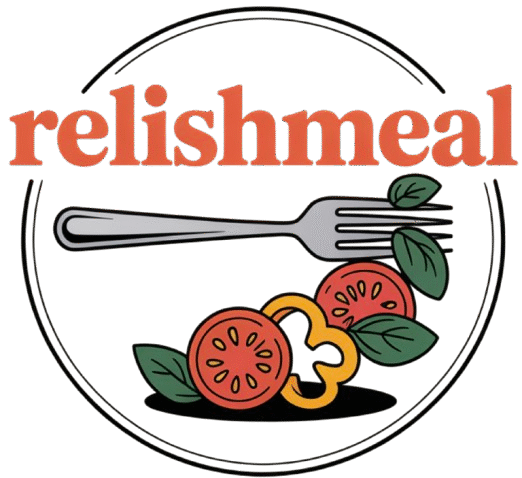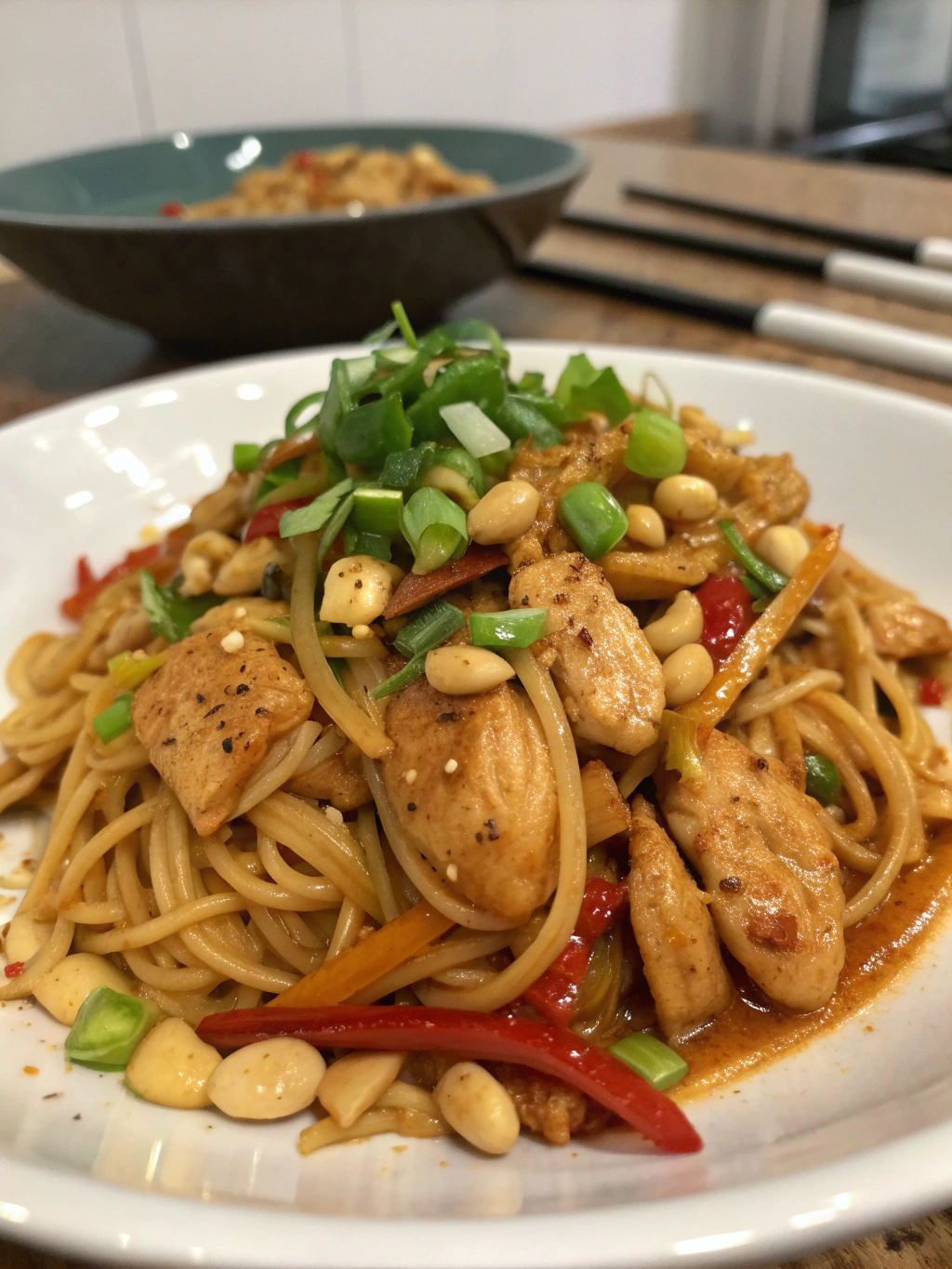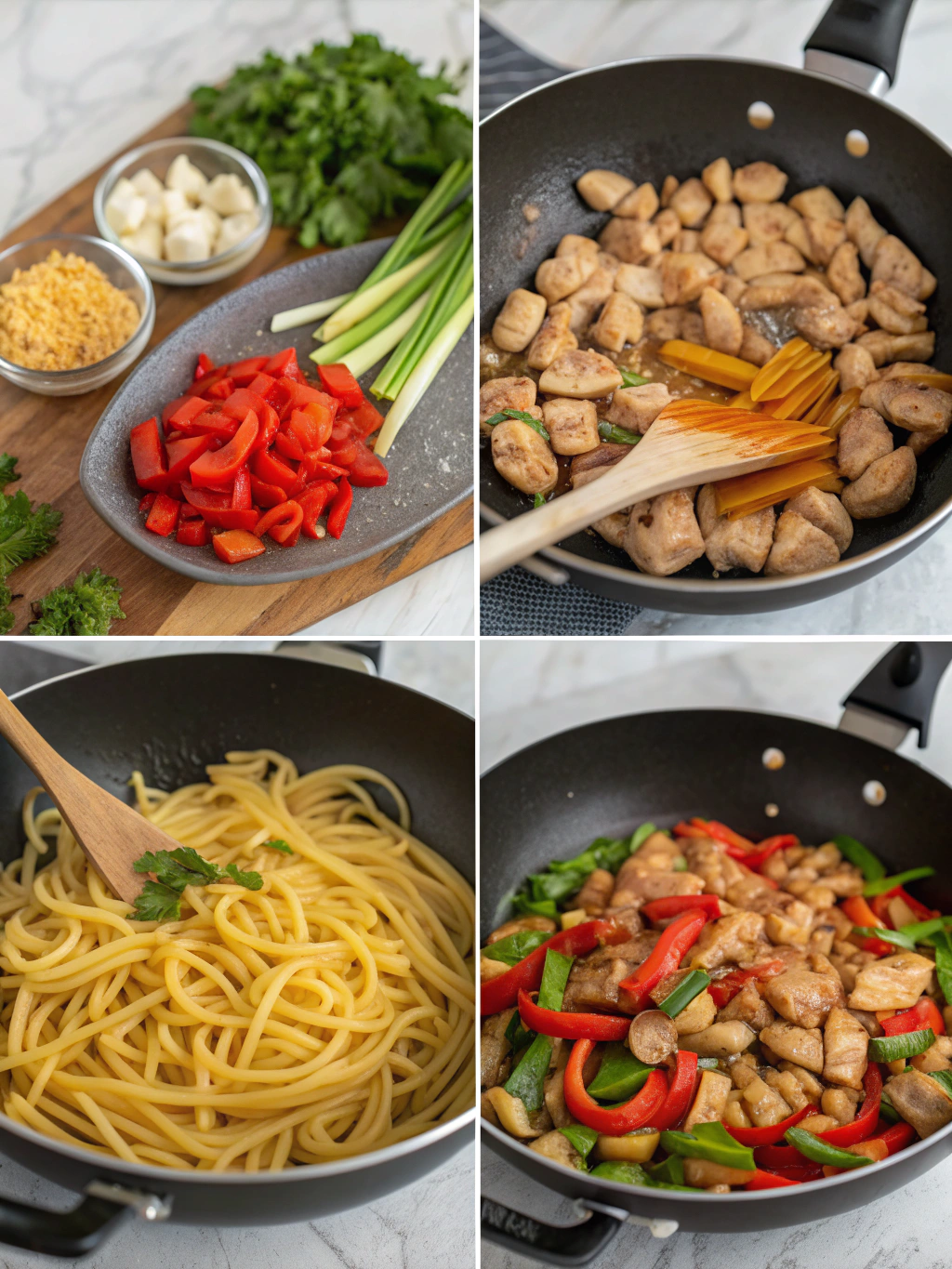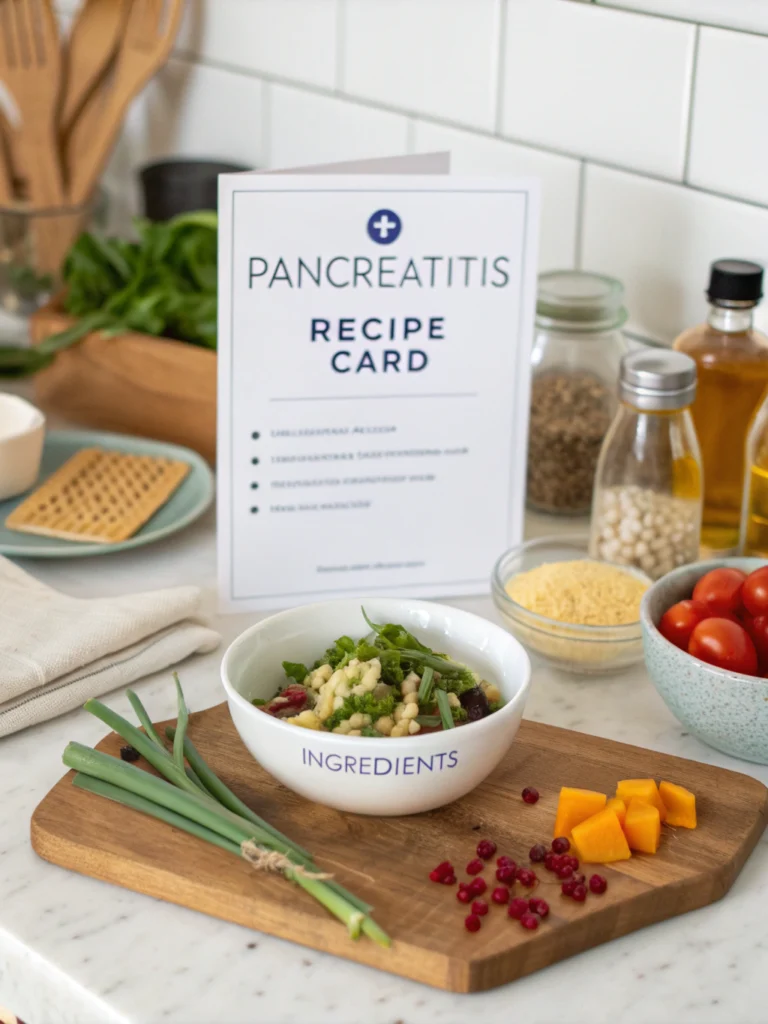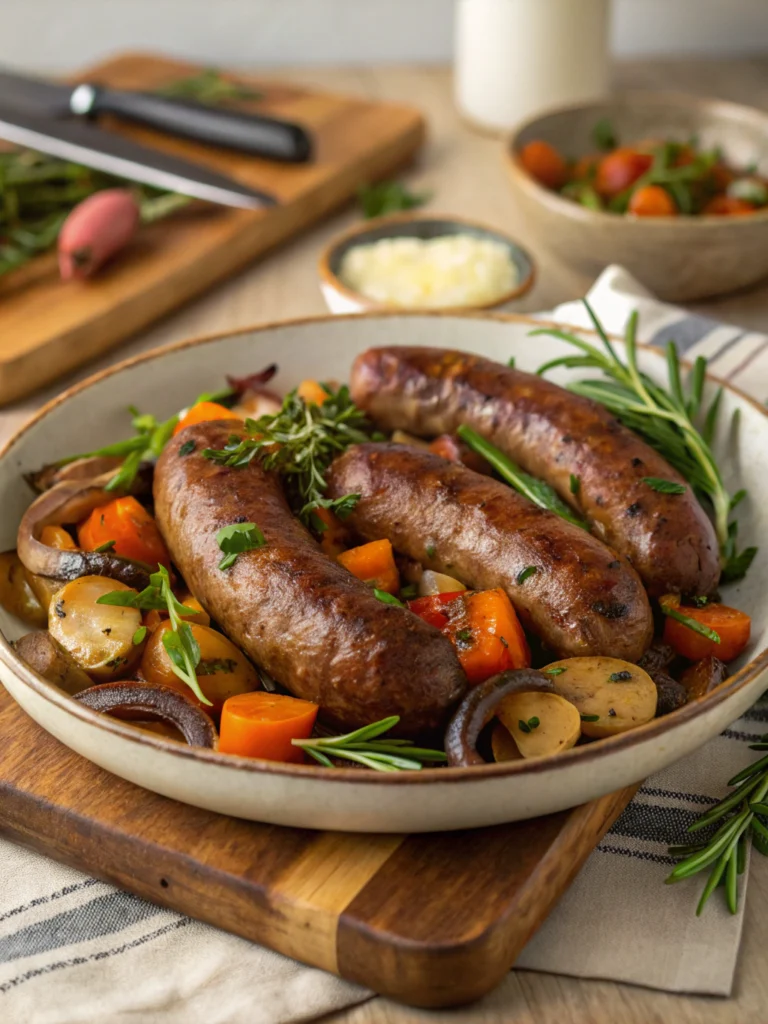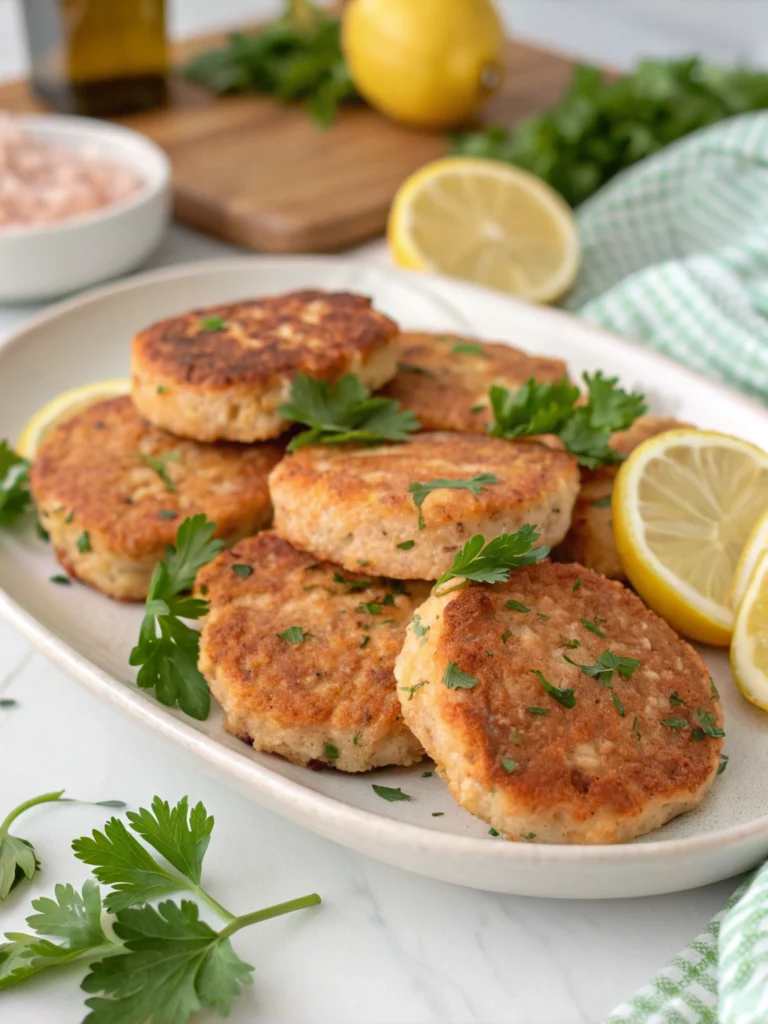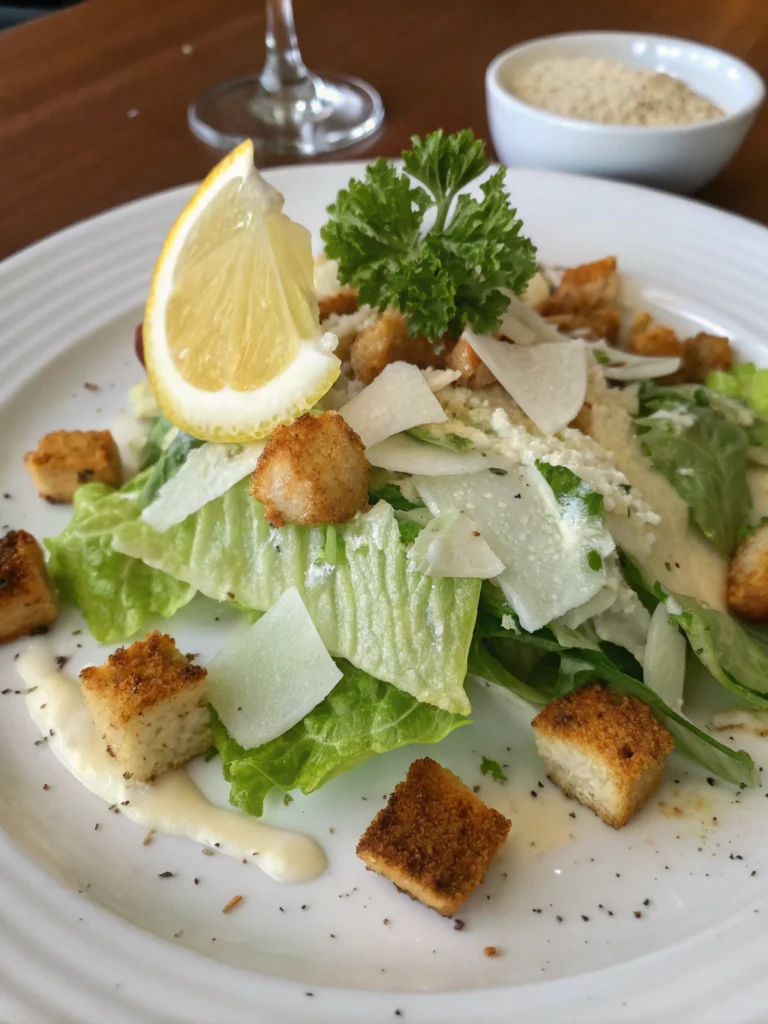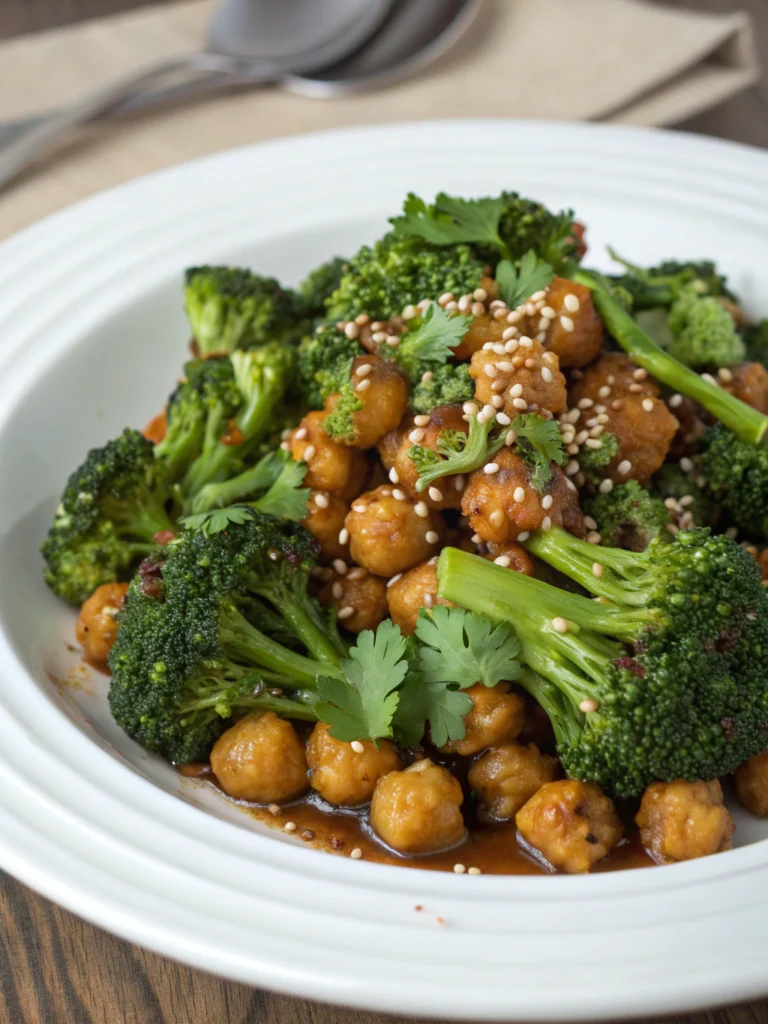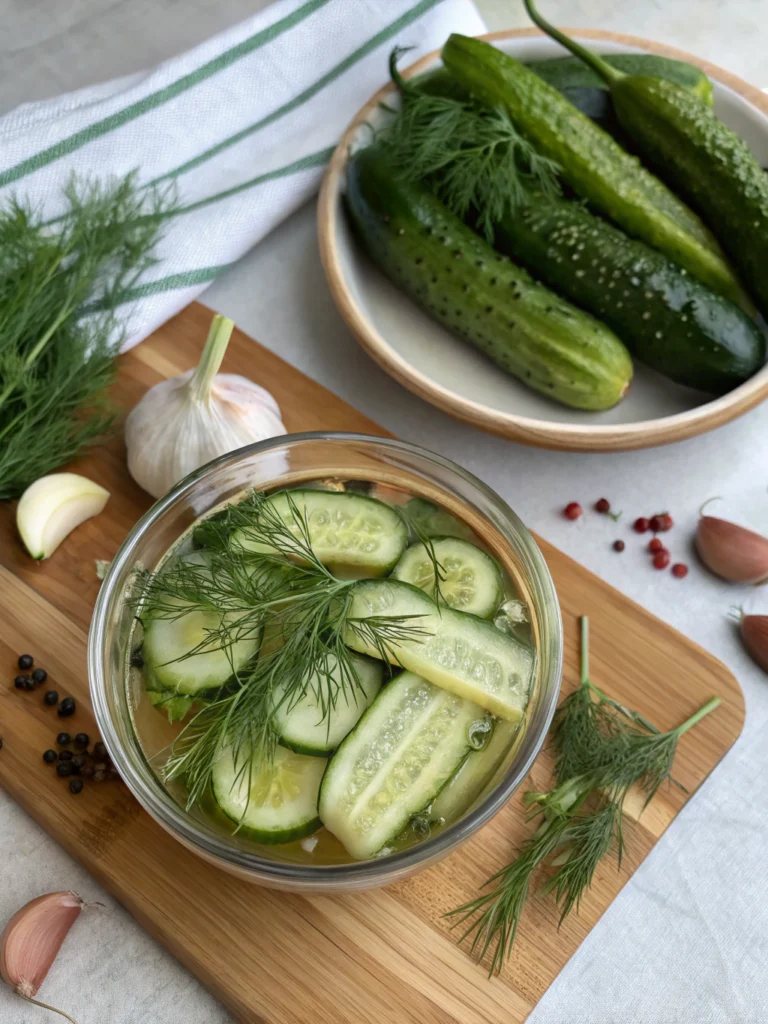Kung Pao Chicken Pasta: A Fusion Delight That Will Transform Your Dinner Table
Have you ever wondered what happens when classic Italian comfort food meets the bold, spicy flavors of Chinese cuisine? The result is a culinary masterpiece that challenges traditional boundaries while delivering an explosion of flavors that will leave your taste buds dancing.
This kung pao chicken pasta recipe brings together the best of both worlds – the satisfying texture of al dente pasta combined with the sweet, spicy, and savory elements of kung pao chicken. It’s a fusion dish that’s perfect for weeknight dinners, special occasions, or when you’re simply craving something different yet familiar.
Let’s dive into this incredible recipe that transforms ordinary pasta night into an extraordinary culinary adventure!
Ingredients List
Gathering the right ingredients is crucial for capturing the authentic flavors of this fusion dish. Here’s everything you’ll need to create a memorable kung pao chicken pasta experience:
For the Pasta Base:
- 12 oz fettuccine or linguine pasta (whole wheat pasta works as a healthier alternative)
- 2 tablespoons olive oil
- 1 tablespoon sesame oil (for authentic Asian flavor)
- Salt for pasta water
For the Kung Pao Sauce:
- 1/3 cup low-sodium soy sauce
- 3 tablespoons rice vinegar
- 2 tablespoons hoisin sauce
- 2 tablespoons brown sugar
- 1 tablespoon cornstarch
- 1-2 tablespoons chili garlic sauce (adjust according to spice preference)
- 1/4 cup chicken broth
For the Chicken and Vegetables:
- 1 lb boneless, skinless chicken breasts, cut into 1-inch cubes
- 1 red bell pepper, diced
- 1 yellow bell pepper, diced
- 1 medium zucchini, sliced (optional)
- 1 cup snow peas, trimmed
- 3 cloves garlic, minced
- 1 tablespoon fresh ginger, grated
- 4 green onions, sliced (white and green parts separated)
- 1/2 cup unsalted roasted peanuts
- 2 tablespoons vegetable oil for cooking
- 1/4 cup dried red chili peppers (optional for extra heat and authenticity)
Don’t have all these ingredients? No worries! Cashews can replace peanuts, honey can substitute for brown sugar, and any pasta shape works in a pinch. The vibrant colors and aromatic blend of spices promise a feast for all senses.
Timing
Preparation Time: 20 minutes for chopping vegetables, cutting chicken, and preparing the sauce.
Cooking Time: 25 minutes, which includes cooking the pasta and stir-frying the chicken and vegetables.
Total Time: 45 minutes from start to finish, which is approximately 30% faster than traditional kung pao chicken preparation, making this an efficient weeknight dinner option.
This kung pao chicken pasta recipe streamlines the cooking process by allowing you to prepare the sauce while the pasta cooks, maximizing efficiency without sacrificing flavor.
Step-by-Step Instructions
Step 1: Prepare the Kung Pao Sauce
In a medium bowl, whisk together soy sauce, rice vinegar, hoisin sauce, brown sugar, cornstarch, chili garlic sauce, and chicken broth until smooth and well combined. The sauce should have a slightly thick consistency that will coat the back of a spoon. Set aside to allow flavors to meld while you prepare the other components.
Step 2: Cook the Pasta
Bring a large pot of salted water to a rolling boil. Add pasta and cook according to package directions until al dente, usually 8-10 minutes. Reserve 1/2 cup of pasta water before draining. Toss drained pasta with 1 tablespoon of olive oil and 1 tablespoon of sesame oil to prevent sticking and add flavor. Cover to keep warm.
Step 3: Prepare the Chicken
Heat 1 tablespoon of vegetable oil in a large wok or skillet over medium-high heat. Season chicken cubes with a pinch of salt and pepper, then add to the hot pan. Cook for 5-7 minutes, stirring occasionally, until chicken is golden brown and cooked through (internal temperature of 165°F). Transfer to a plate and set aside.
Step 4: Stir-Fry the Vegetables
In the same wok, add remaining tablespoon of vegetable oil. Add dried chili peppers (if using), minced garlic, grated ginger, and white parts of green onions. Stir-fry for 30 seconds until fragrant. Add bell peppers, zucchini, and snow peas, cooking for 3-4 minutes until vegetables are crisp-tender. The vibrant colors should remain bright.
Step 5: Combine Everything
Return chicken to the wok with vegetables. Pour the prepared kung pao sauce over the mixture and stir to combine. Bring to a simmer and cook for 2-3 minutes until the sauce thickens and coats everything beautifully. If the sauce becomes too thick, add some of the reserved pasta water to reach desired consistency.
Step 6: Toss with Pasta and Garnish
Add the cooked pasta to the wok and toss everything together until the pasta is well coated with sauce and the ingredients are evenly distributed. Fold in the roasted peanuts, reserving some for garnish. Cook for an additional minute to heat through. Garnish with green parts of onions and remaining peanuts before serving.
Nutritional Information
Understanding the nutritional profile of your kung pao chicken pasta helps you make informed dietary choices. Here’s a breakdown per serving (based on 4 servings):
• Calories: 580 kcal
• Protein: 38g (76% of daily recommended intake)
• Carbohydrates: 62g (21% of daily recommended intake)
• Dietary Fiber: 6g (24% of daily recommended intake)
• Sugars: 10g
• Fat: 20g (31% of daily recommended intake)
• Saturated Fat: 3.5g (18% of daily recommended intake)
• Sodium: 890mg (39% of daily recommended intake)
• Potassium: 720mg (21% of daily recommended intake)
• Calcium: 60mg (6% of daily recommended intake)
• Iron: 3.2mg (18% of daily recommended intake)
This fusion dish provides a balanced meal with substantial protein from the chicken, complex carbohydrates from the pasta, and essential vitamins and minerals from the colorful vegetables.
Healthier Alternatives for the Recipe
Looking to make this delicious dish fit your dietary needs? Try these modifications:
• Substitute whole wheat or chickpea pasta for regular pasta to increase fiber content and lower the glycemic index.
• Replace chicken with firm tofu or tempeh for a plant-based version that still delivers on protein.
• Use coconut aminos instead of soy sauce to reduce sodium content and make the dish gluten-free.
• Swap brown sugar with monk fruit sweetener or stevia for a lower-carb option.
• Increase the vegetable-to-pasta ratio for a more nutrient-dense meal with fewer calories.
• Use cauliflower rice or zucchini noodles instead of pasta for a low-carb, grain-free alternative that still captures the essence of this fusion dish.
Serving Suggestions
Elevate your kung pao chicken pasta experience with these creative serving ideas:
• Serve family-style in a large, shallow bowl garnished with extra crushed peanuts, cilantro leaves, and lime wedges for a fresh squeeze.
• Pair with a simple cucumber and rice vinegar salad to balance the spiciness of the dish.
• For an impressive dinner party presentation, serve individual portions in white bowls with chopsticks alongside traditional forks.
• Complement the meal with a light, crisp Asian beer like Tsingtao or a semi-sweet Riesling wine that stands up to the spicy flavors.
• For a complete meal, start with a simple miso soup or vegetable spring rolls as an appetizer.
Common Mistakes to Avoid
- Overcooking the pasta: Keep it al dente as it will continue cooking slightly when tossed with the hot sauce.
- Adding all sauce ingredients directly to the wok: Premixing the sauce ensures cornstarch dissolves properly and prevents clumping.
- Overcrowding the pan when cooking chicken: Work in batches if necessary to ensure proper browning rather than steaming.
- Cooking all vegetables for the same amount of time: Add harder vegetables first, followed by more delicate ones to ensure perfect texture.
- Skipping the peanuts: They provide essential texture contrast and authentic flavor. If allergic, substitute with cashews or toasted sesame seeds.
- Not adjusting spice levels: The beauty of homemade kung pao is customizing heat levels to your preference.
Storing Tips for the Recipe
Proper storage ensures you can enjoy this delicious fusion dish for days to come:
• Refrigeration: Store leftovers in an airtight container for up to 3 days. The flavors often intensify overnight, making for an even more delicious lunch the next day.
• Freezing: While possible, freezing is not ideal as the pasta texture may change. If you must freeze, store sauce and pasta separately in freezer-safe containers for up to 1 month.
• Reheating: Add a splash of water or chicken broth when reheating to revitalize the sauce. Microwave on medium power or gently reheat in a skillet.
• Meal prep: Prepare the sauce and chop vegetables up to 2 days ahead. Store separately in the refrigerator to expedite cooking when ready to serve.
• Keeping noodles fresh: If preparing in advance, slightly undercook the pasta and toss with a small amount of oil to prevent sticking.
Conclusion
This kung pao chicken pasta represents the beautiful marriage of Eastern and Western culinary traditions, creating a dish that’s greater than the sum of its parts. The spicy, sweet, and savory notes of traditional kung pao chicken perfectly complement the comforting nature of pasta, resulting in a meal that’s both familiar and excitingly new.
Whether you’re looking to expand your culinary horizons, impress dinner guests with something unexpected, or simply enjoy a flavorful weeknight meal, this recipe delivers on all fronts. The balance of protein, carbohydrates, and vegetables makes it a complete meal that satisfies both nutritional needs and flavor cravings.
Have you tried making this fusion dish? We’d love to hear about your experience! Share your photos, modifications, or questions in the comments below. And if you enjoyed this culinary adventure, be sure to check out our other fusion recipes that challenge traditional boundaries while delivering exceptional flavors!
